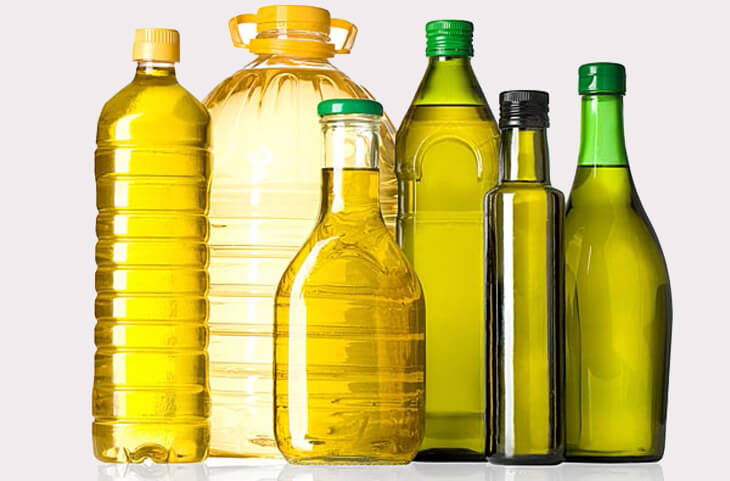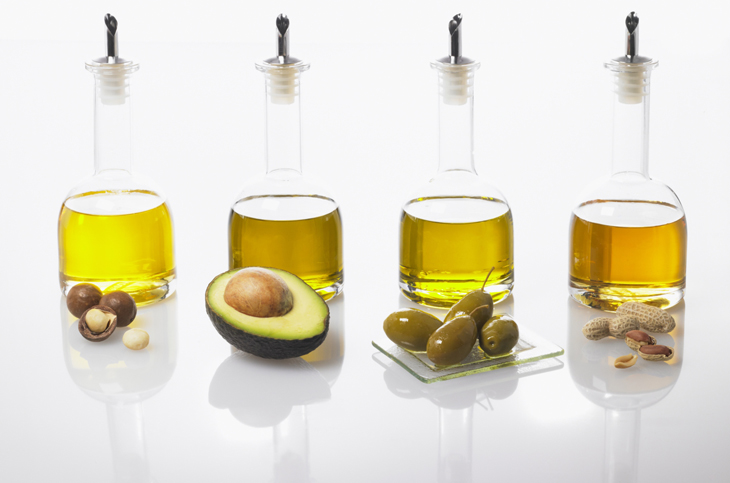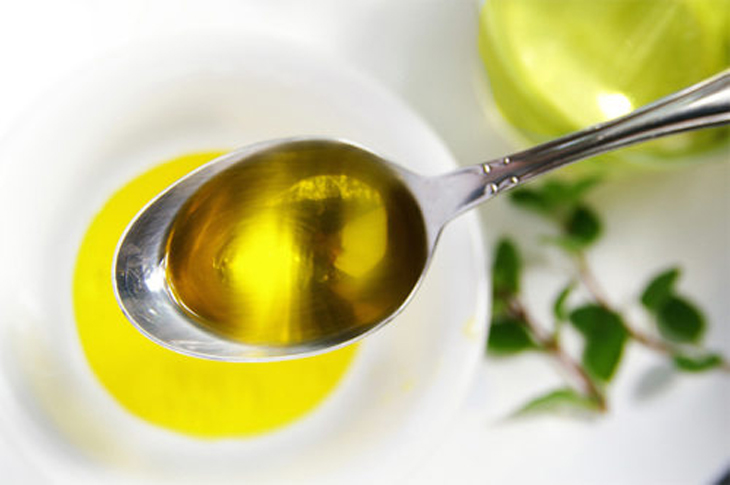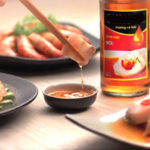Observing the Color of Cooking Oil
Each type of cooking oil typically has a characteristic color. For example, rapeseed oil has a slightly greenish tint in its yellow color, peanut oil has a hint of orange or yellow-orange color, and cottonseed oil has a lighter yellow color. Good quality cooking oil usually has a dark yellow color, while medium quality oil will have a lighter yellow color. In addition, all cooking oils should appear clear and bright to the naked eye. On the other hand, poor quality oil often has a dark, dull color that may be brown or slightly black.
 Good quality cooking oil has a bright, clear color, with a characteristic yellow color according to the type of raw material
Good quality cooking oil has a bright, clear color, with a characteristic yellow color according to the type of raw material
Evaluating through Smell
Another way to assess the quality of cooking oil is through smell. To do this, make sure to clean your hands properly before testing. Avoid using scented soap, as it may interfere with the assessment. Take a few drops of cooking oil and spread it all over your palm using your other hand. Then, smell the oil.
Good quality cooking oil should have a distinct smell that corresponds to its type. For example, peanut oil, sesame oil, soybean oil, and olive oil each have their own characteristic scent. The oil should not have any strange or unpleasant smells. If you notice any unusual odors, rotten smells, or rancid smells, it is likely that the oil is of poor quality.

Taste Inspection
Tasting is also an effective way to evaluate the quality of cooking oil. Dip a clean chopstick into the oil you want to test and taste it with your tongue. Good cooking oil should not have any strange taste, bitterness, or sourness. It should only have the characteristic taste of its raw material. Remember to spit out the oil and thoroughly rinse your mouth if you detect any unusual taste.

A Few Tips for Testing Mixed Cooking Oil
If you are testing mixed cooking oil, there are a few additional tips to keep in mind. Good cooking oil will flow smoothly when you shake the bottle, while poor quality oil may contain sediment and impurities that cause it to appear viscous when shaken. Furthermore, good cooking oil should not solidify or solidify only slightly (with a thin layer on the surface) when exposed to cold weather. On the other hand, poor quality oil tends to solidify entirely when exposed to cold temperatures.

Additionally, if cooking oil has been mixed with a lot of water, it may separate into layers during storage. For example, dense oils like sesame oil can decompose, deteriorate, oxidize, and spoil when mixed with water. Lastly, you can test a sample of cooking oil by adding a few drops of iodine. If the oil turns blue, it indicates that it has been mixed with starch.
It is important to choose reputable and high-quality cooking oil brands that are trusted by many families to ensure your safety and health. Some recommended brands include…
Cooking oil is a commonly traded consumer product, so users are prone to purchasing counterfeit or low-quality products. Besides choosing products from reputable brands, users should also be familiar with a few tips to test the product before buying or using it.
Making an Impact on the Taste: Comparison of Stir-Frying Ramen Noodles with or without Seasoning Packet Added First
 Taste: Comparison of Stir-Frying Ramen Noodles with or without Seasoning Packet Added First’>
Taste: Comparison of Stir-Frying Ramen Noodles with or without Seasoning Packet Added First’>From school cafeterias to office lunchrooms, shrimp noodle dishes are a familiar sight for many of us – especially students and busy professionals.


































